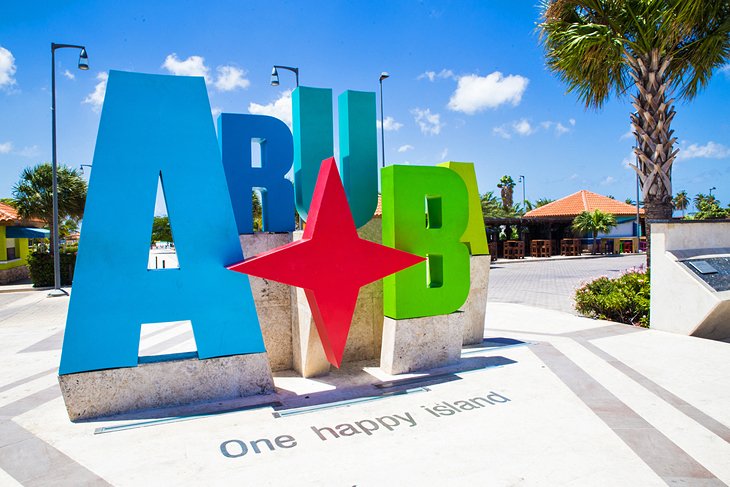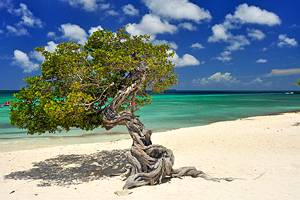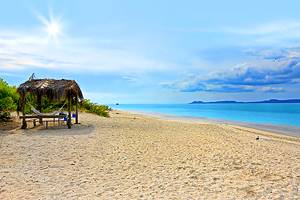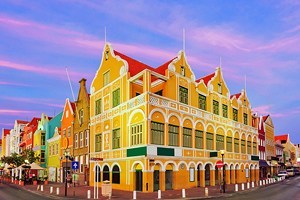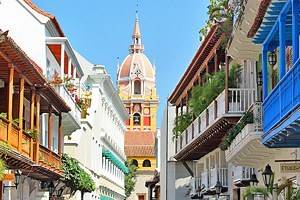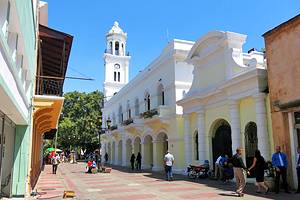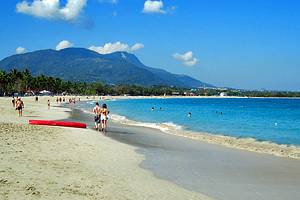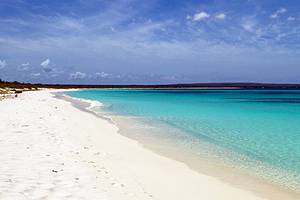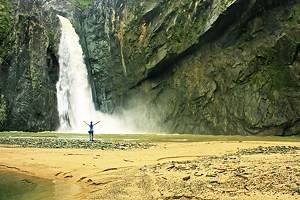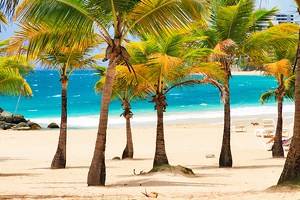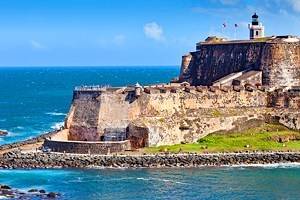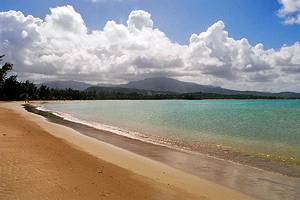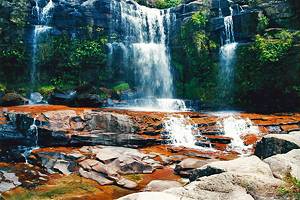16 Top-Rated Tourist Attractions in Aruba
In Aruba, the Papiamentu word "dushi" is used to describe everything from the food to the scenery to other people. Translated to mean enjoyable, pleasing, sweet, or delicious, it works perfectly to sum up life in general on "one happy island."
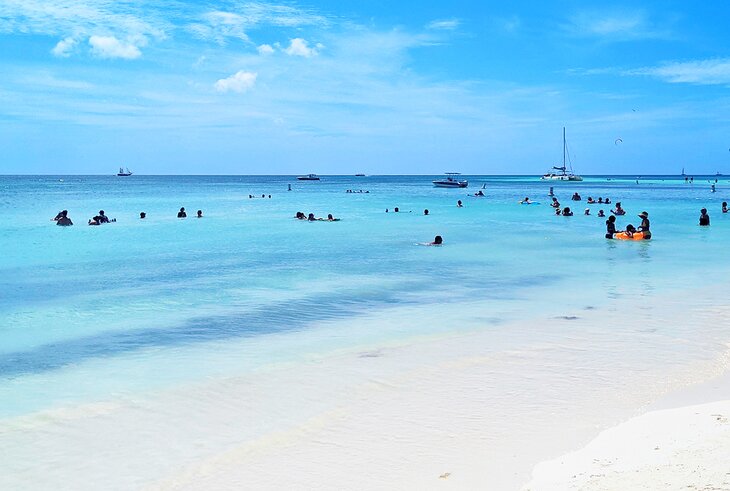
Just 15 miles north of Venezuela, Aruba is blessed with stunning natural beauty, near-perfect weather, and plenty of attractions. It boasts some of the Caribbean's best wreck diving amidst thriving coral reefs, as well as excellent big-game fishing and kiteboarding.
It also serves up an array of non-beach-focused things to do. You can drive ATVs off-road in the cacti-strewn desert or take a guided tour through the island's burgeoning mural art scene. Its quaint capital, Oranjestad, is home to brightly-hued Dutch colonial buildings.
Aruba's location is also ideal. It is outside of the Atlantic hurricane belt, meaning you can safely visit year-round. It has a desert climate, getting about 15 inches of rain per year. And near-constant trade winds blow, which keeps temperatures and humidity down even in the middle of summer.
Yeah, we'd say pretty much everything about Aruba is pretty dushi. Discover the best places to visit on this popular Caribbean island with our list of the top tourist attractions in Aruba.
- Aruba's Beaches
- Oranjestad
- Arikok National Park
- Boca Prins
- California Lighthouse & California Dunes
- Aruba's Dive Sites
- Andicuri Trail by ATV
- Natural Pool
- Aruba Mural Tours
- The Butterfly Farm
- Aruba Aloe Factory & Museum Tour
- Philip's Animal Garden
- Donkey Sanctuary of Aruba
- Renaissance Island: "Flamingo Beach"
- Alto Vista Chapel
- De Palm Island
Aruba's Beaches
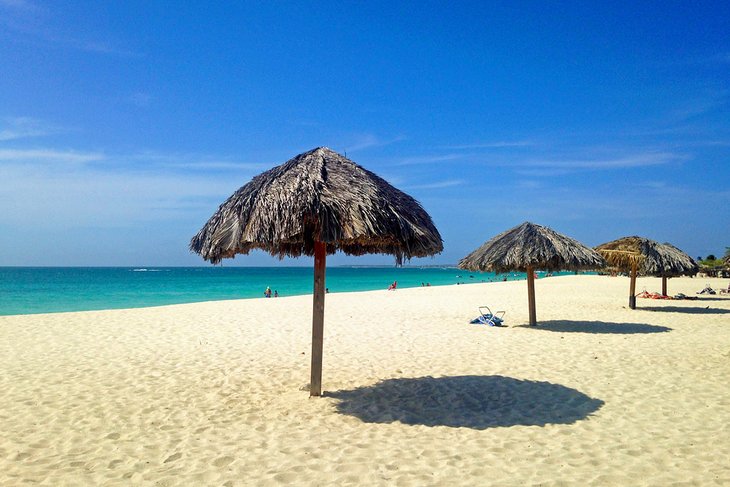
Aruba offers an abundance of dazzling beaches. The northwest coast of Aruba, from Druif Beach to Eagle Beach, and Palm Beach to Malmok, is an 11-kilometer sweep of uninterrupted white sand and clear jade waters. Eagle Beach and Palm Beach are favorites.
Manchebo Beach tends to be a little more peaceful than the lively neighboring beaches. Taking a sunset stroll along this powdery stretch of coast is one of the most romantic things to do in Aruba.
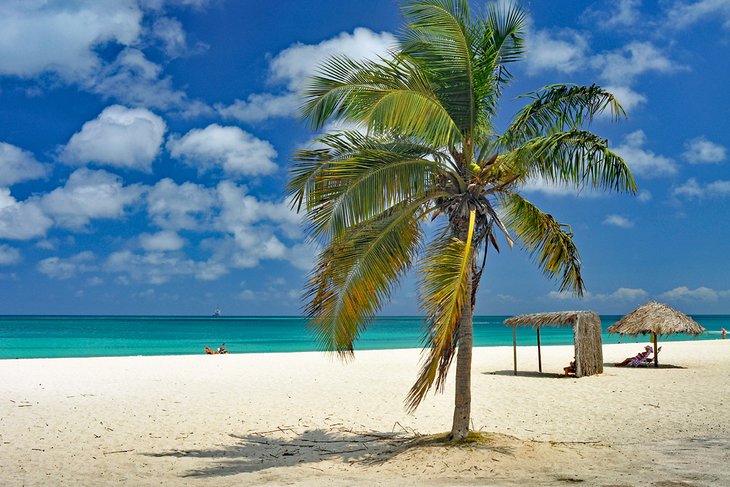
Near the California Lighthouse, Malmok Beach and secluded Arashi Beach are great for swimming and snorkeling.
Looking for a little more wave action? On the windward east coast, Bachelor's Beach, Boca Grandi, Boca Prins, Dos Playa, Black Stone Beach, and Boca Andicuri have stronger currents and larger waves. Although they are not recommended for swimming, windsurfers and kitesurfers can tackle the swells.
The beaches in the southeast are less populated. Locals' favorite, Baby Beach is great for inexperienced swimmers, with its shallow basin and calm waters.
Oranjestad
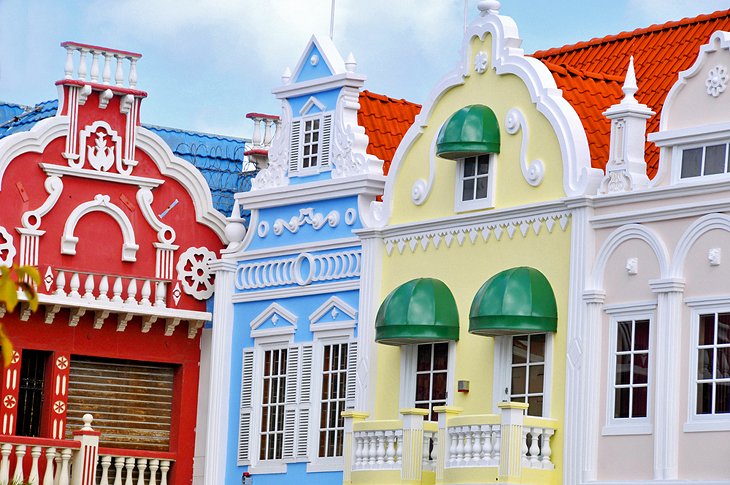
Oranjestad, Aruba is a charming city and the capital and cruise port of this tiny island. The most striking feature is the Dutch colonial architecture. Pastel-hued buildings with a Spanish and Caribbean twist jostle along the tidy streets, and you'll find many shops, restaurants, museums, galleries, and entertainment options. Overall, the city is simply a fun place to walk around and soak up the atmosphere.
Well-maintained Wilhelmina Park, on the waterfront, is one of the city's main attractions, particularly in June, September, and October when many of the plants are in bloom. Look for iguanas along the water's edge.
A short walk from here, you can explore the small Aruba Historical Museum, with artifacts related to the entire history of the island. It's housed in the King Willem III Tower at Fort Zoutman, which was built as a lighthouse and pirate-spotting vantage point.
Looking for educational things to do in Aruba with kids? Head to the Aruba Aloe Factory to learn about the medicinal qualities of this wonder plant, and purchase skin-soothing souvenirs. Save time to stop by The Butterfly Farm, too. It's a favorite tourist attraction for children, as well as avid photographers.
If you're a shopper, Renaissance Shopping Mall features high-end stores like Chanel, Gucci, and Cartier.
For fantastic views over the city, hike to the top of the 165-meter-tall volcanic rock formation, Hooiberg. And if you prefer a more relaxing sightseeing experience, a great way to get a feel for the city is to hop aboard the bright red Aruba Streetcar, a free open-air bus that runs between the top attractions in the city.
Arikok National Park
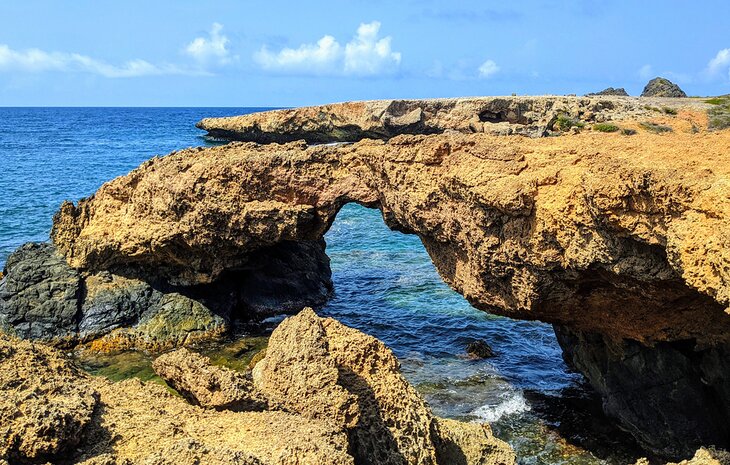
Outdoor enthusiasts love exploring rugged Arikok National Park. Covering almost 20 percent of the island, the park features cacti-covered landscapes, caves, sand dunes, and unique rock formations.
Large boulders adorned with Indian paintings make up the odd rock formation known as Ayó, and the Casibari Boulders, weathered by trade winds, are strewn amid dry scrub. You can walk the trails and steps ascending through the rocks for great views and photo opportunities.

Arikok National Park also encompasses the wave-thrashed shores of the island's north coast. Wave erosion carved the Natural Bridge at Anicouri, which collapsed in 2005, but you can still see a smaller natural bridge here, and it's a great spot for a picnic.
On the picturesque waterfront, the old stone walls of the Bushiribana Gold Mill Ruins are the remains of a 19th-century gold smelter.
You can even spot some wildlife in Arikok National Park. Parakeets, goats, lizards, snakes, and iguanas are just some of the creatures found here.
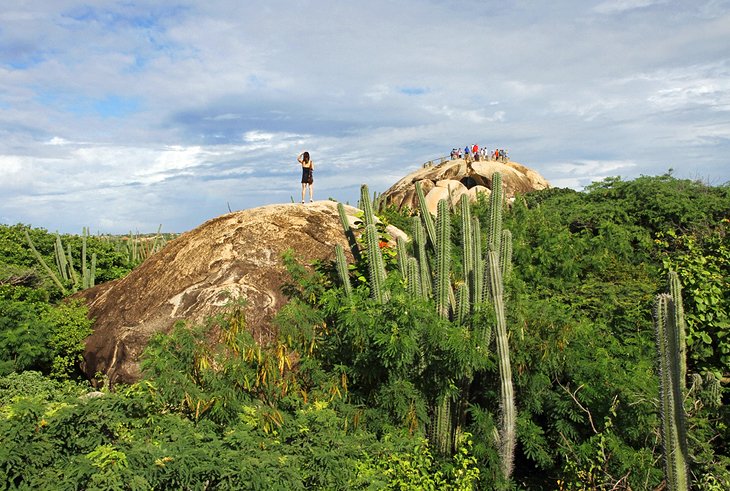
Since the roads can be rugged, a 4WD vehicle is recommended – some sites can't be accessed via 2WD vehicles – but you can also explore on horseback, or hike the many trails. To really enjoy all the park's top sites, a full day is recommended here.
Address: San Fuego 71, Santa Cruz
Official site: http://www.arubanationalpark.org/main/
Boca Prins
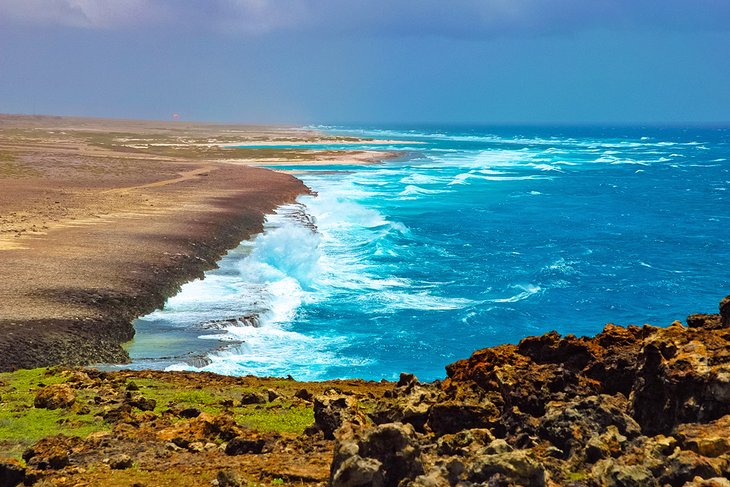
Boca Prins is a dramatic stretch of coast backed by massive sand dunes. It lies within Arikok National Park, near the Fontein Cave and Blue Lagoon. Trade winds sculpt these shifting sand dunes, so you'll see a different beachscape every time you visit
At the narrow sliver of beach, crashing surf and soaring limestone cliffs create dramatic coastal vistas. Swimming here is too dangerous, but it's a great spot for a picnic, and you can descend the steps to the shore, sink your feet in the sand, and feel the spray of the salty surf on your face. Four-wheel drive vehicles are highly recommended.
California Lighthouse & California Dunes
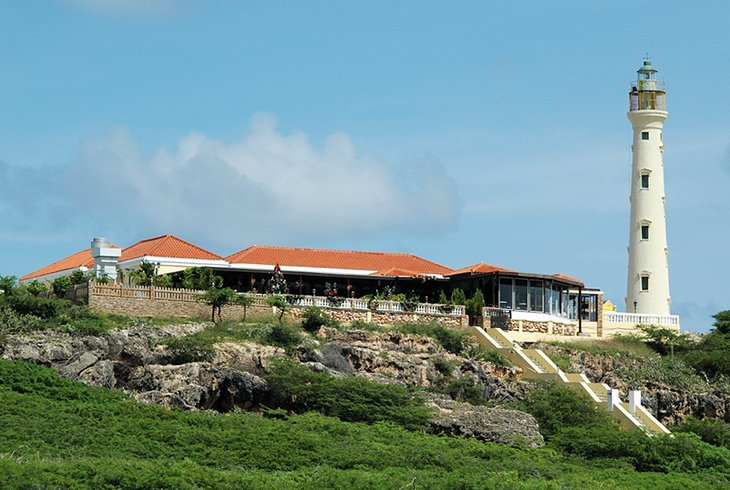
At the northern tip of the island, the California Lighthouse stars on many Aruban postcards and tourist brochures. It was named for the S.S. California, which sunk off the coast here. The surrounding area is rugged and beautiful, with sand dunes, called the California Dunes; cacti; and even some grazing goats.
Although the lighthouse is closed to the public, it's a great spot to compare the calm waters of the western shore with the rough waves of the east. Sunset is a beautiful time to visit the lighthouse and enjoy panoramic island views. Many guests linger for dinner at the nearby restaurant.
Aruba's Dive Sites
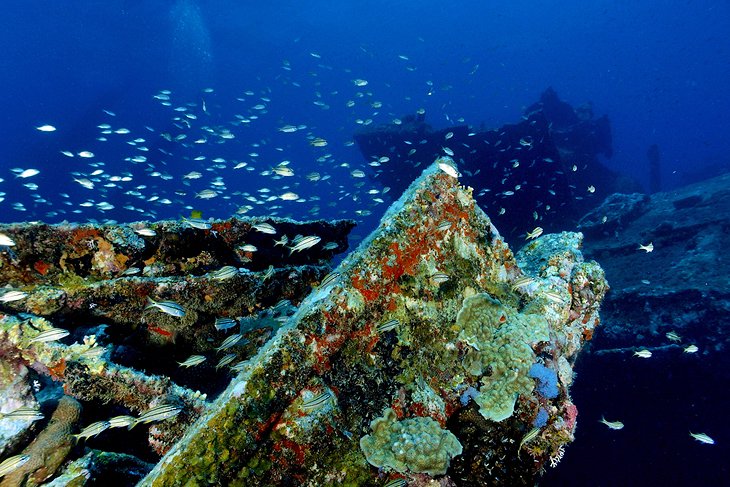
Aruba is famous for its excellent wreck diving, catering to divers of all levels. Sunken vessels range from tugboats to cargo ships, and even plane fuselages.
Lying between Arashi and Malmok, the Antilia is the Caribbean's largest wreck and one of Aruba's most popular dives. Snorkelers can also explore the shallow-water sections of this wreck. Other popular wrecks include the 76-meter former concrete freighter Jane Sea and the oil tanker Pedernales.
Coral reefs lace the island's leeward shore. Some of the best reef dive sites include Skalahein Reef; Plonco Reef; and Mas Bango Reef, which is also excellent for snorkeling.
Those who prefer to stay dry can board the Atlantis Submarine to view marine life, coral formations, and shipwrecks.
Andicuri Trail by ATV
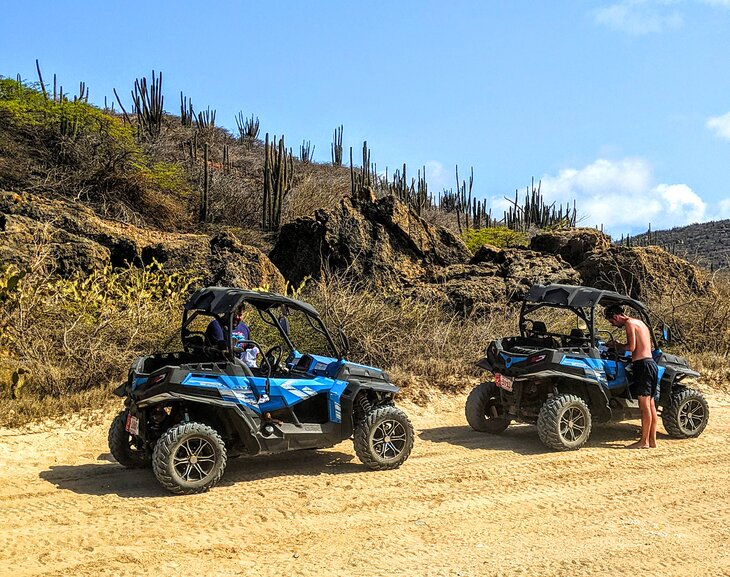
For a wild half-day in the wilderness, sign up for the Andicuri UTV off-road adventure from De Palm Tours. Many excursions are available, but the exhilarating 3-hour ride on the Andicuri Trail in Aruba's "Outback" is one of the best. We recommend adding on the stop for snorkeling choice and making this a 4-hour adventure.
After a quick driving lesson and a short trip on the pavement, you'll leave the road behind and turn onto the Andicurri Trail, which is a mix of sand and rock. The trail climbs some steep terrain, and you'll have to navigate some obstacles along the way, but it is a super fun adventure as you get to drive your own UTV (very similar to an ATV).
The tour stops at Black Stone Beach, Baby Natural Beach, Three Bridges Formation, and the Alto Vista Chapel, so it is also a great way to experience a lot of Aruba's top attractions at once.
One note: you'll be filthy at the end of this tour, covered in red dust, so dress appropriately.
Official site: https://depalm.com/utv-tours/andicuri-utv-adventure/
Natural Pool
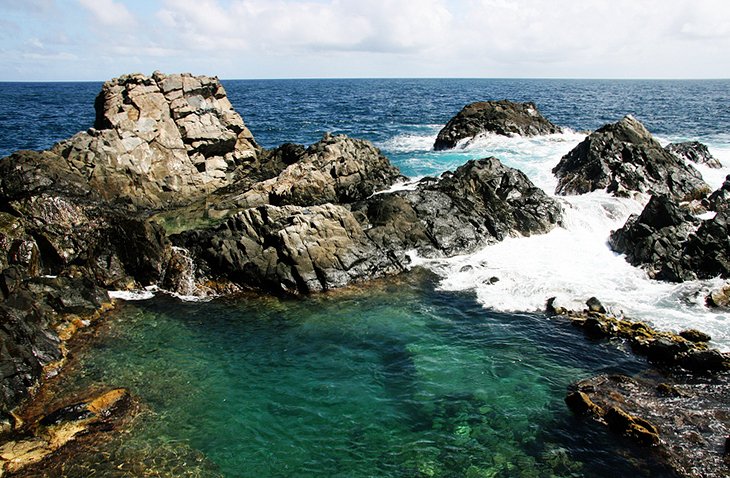
The Natural Pool is just that, a protected swimming hole filled by waves crashing over the slick rocks. You can swim and snorkel here, although the area is really not that big. The pool is inside Arikok National Park, and lies down a rugged road only accessible by 4WD vehicle. If you're looking for adventure, you can navigate the area yourself. But note the road is not well marked and can get washed out and super rocky. The best way to visit this attraction is on an organized 4WD tour.
You can also hike to the Natural Pool via a trail that starts at the national park's visitor center. The trail is 4.8 miles out and back, and is considered moderately strenuous. Depending on how long you spend at the pool, it takes about 3-hours to complete. Go as early as possible in the morning, as afternoons can get really hot.
You'll want to wear proper walking shoes and carry plenty of water. Be careful when swimming in the pool on your own. The rocks near the edges can be super slippery and you also need to watch for rogue waves crashing over into the pool (if the water is too rough, don't get in).
Aruba Mural Tours
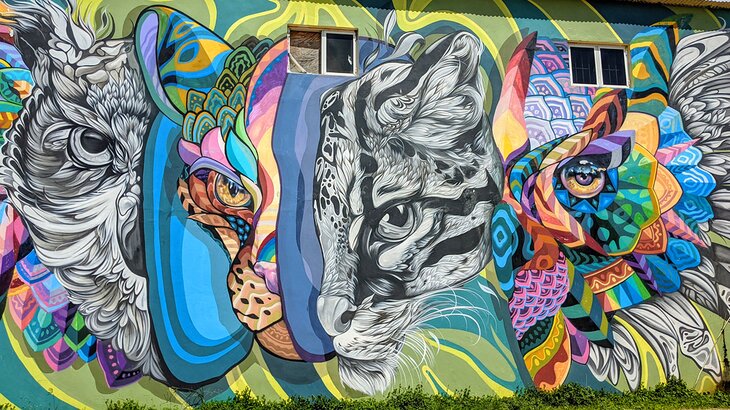
For something different, drive 20 miles south from Palm Beach to the island's burgeoning arts district in San Nicolas at the far southwest tip of Aruba. There are more than 50 murals and art installations scattered around this formerly abandoned neighborhood. And with the number of tourists the street art is drawing increasing each year, other businesses are also opening again in San Nicolas. Technically Aruba's second-largest city, its downtown had moved to ghost town status after Exxon closed an oil refinery here in 1985. On our last visit, we discovered a wonderful little coffee and light meal restaurant here called Kulture Kafe.
You can tour the murals, which were created by local and international artists hailing from around the world, on your own. But if you want to support the initiative, which is the result of a lot of hard work and passion by the enigmatic Tito Bolivar, then join one of his Art Mural Tours.
The 2-hour tours, which are even dog-friendly, tell you the story behind the artwork. Tours also provide insight into how Tito came up with the concept (spoiler alert: he got the idea after seeing street art transform neighborhoods in Bogota, Colombia) and his vision for the future of street art in Aruba.
Tours are flexible and can include a workshop with a local artist to paint your own creations. Art dinners are also offered most months. Check the website for up-to-date info.
Official site: https://arubamuraltours.com/
The Butterfly Farm
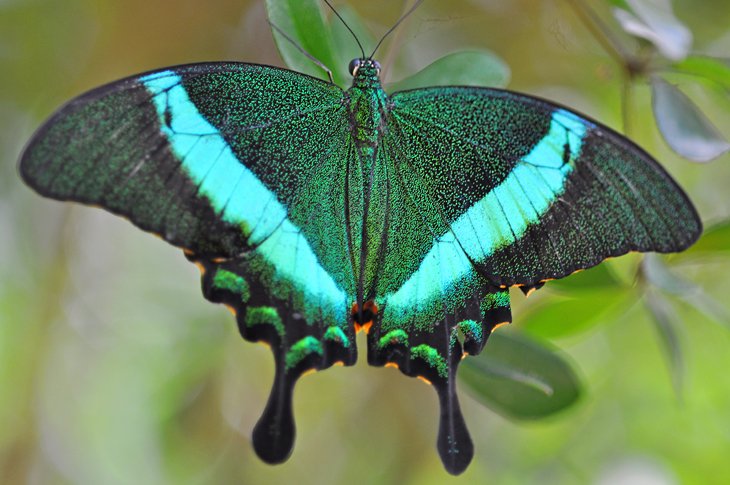
Children, photographers, and anyone who loves nature will enjoy The Butterfly Farm near Palm Beach. During your visit, you can walk through an enclosure with lush, tropical gardens and witness these winged beauties fluttering around you.
Guided tours help you identify the different species, and you'll also learn about butterfly habitats and the life cycles of these delicate creatures. If you arrive early enough, you may even see butterflies emerging from their chrysalis.
This is one of the most unique things to do in Aruba and a wonderful way to capture colorful close-up photos. Best of all, your admission allows you to return as many times as you like during your stay.
Address: J.E. Irausquin Blvd, Noord, Aruba
Aruba Aloe Factory & Museum Tour
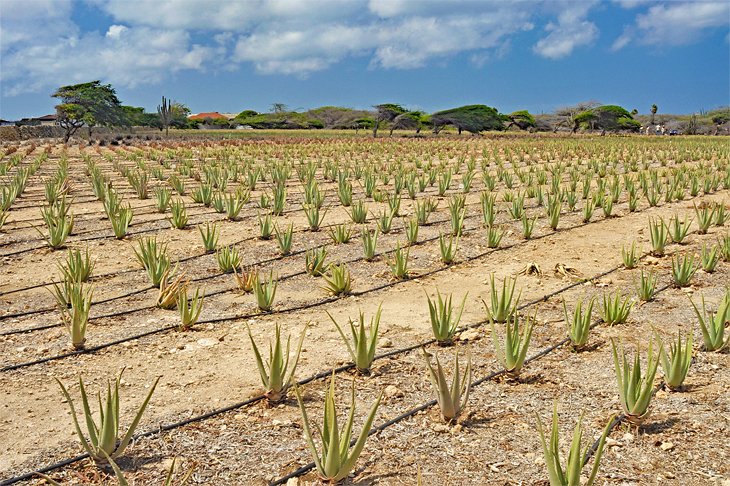
One of the top free things to do in Aruba is take a tour at the Aruba Aloe Museum, Factory, and Store. During this fascinating tour, you'll learn everything you ever wanted to know about aloe plants.
Watch a short film about the history of aloe production in Aruba, witness your guide "filet" an aloe leaf to extract the glutinous flesh, see the plants growing in the sandy soil, and learn about aloe's health benefits. The tour also includes a walk through the factory, where you can see how the products are made and packaged.
After your tour, you can purchase some aloe products in the gift shop to soothe your sunburn or take home as souvenirs. The Tours depart every 15 minutes, and self-guided tours are also possible.
Address: Pitastraat 115, Oranjestad
Philip's Animal Garden
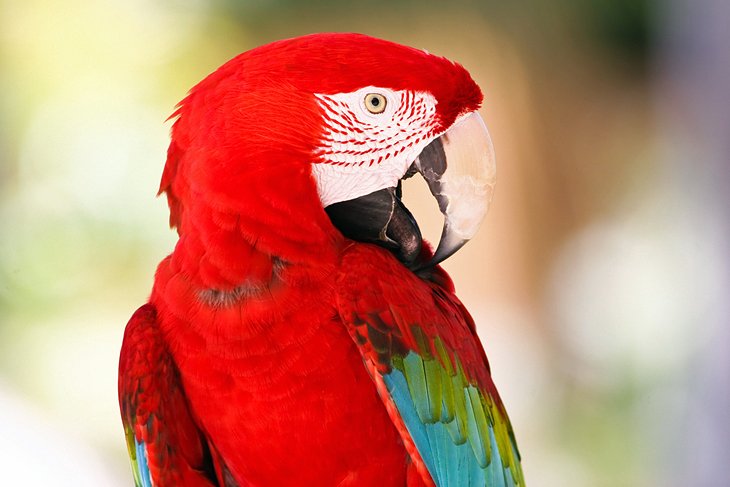
The non-profit Philip's Animal Garden is a sanctuary and rehabilitation center for more than 52 species of animals. Animal-lover Philip Merryweather poured his passion for exotic animals into this popular tourist attraction, which runs educational and interactive tours.
Favorite residents include snakes, kangaroos, monkeys, emus, ostriches, and ocelots, but you'll also find farmyard animals such as goats, pigs, horses, and donkeys.
This is a fantastic place to bring the kids. The friendly staff are happy to answer questions and share the stories of each resident, and you can touch and feed some of the creatures. A small donation grants you entrance, as well as a bag of carrots to feed the animals. All funds go towards care of the animals.
If you want even more critter-based fun, head to the Aruba Ostrich Farm for a quick tour and a chance to learn more about these flightless, feathered beasts.
Address: Alto Vista 116, Noord
Official site: http://www.philipsanimalgarden.com/
Donkey Sanctuary of Aruba
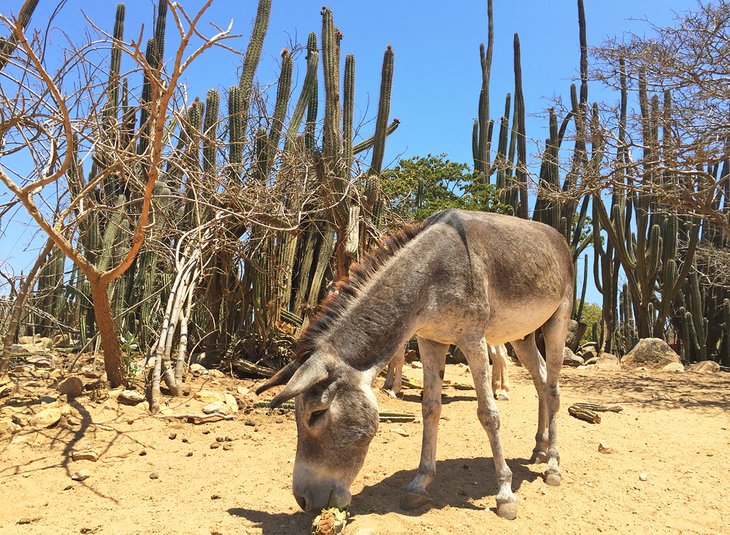
A stop at the Donkey Sanctuary is one of the best things to do in Aruba for animal lovers. Donkeys have lived on Aruba for more than 500 years and were once the main form of transport on the island. Sadly, though, many now fall victim to car accidents and disease. This non-profit organization rescues sick and injured donkeys from around the island, and you can come and meet these lovable beasts.
Want to make some friends? Bring some carrots and apples. Alternatively, you can buy some food from the little gift shop. A word of warning, though: Make sure you stand behind the gate before you offer your tasty treats to the residents – unless you don't mind being mobbed by 130 hungry donkeys.
If you prefer a less interactive experience, you can relax with a cool drink from the little shop and watch the donkeys from the shady porch. Friendly volunteers share their love and knowledge about these rescued animals – every one of them has a name.
Donkey Sanctuary of Aruba is free to visit, but your donation is appreciated. All proceeds from your visit and any gift shop purchases support this important work. Arrive early if you want to help out with some of the chores around the sanctuary.
Official site: http://main.arubandonkey.org/portal/
Renaissance Island: "Flamingo Beach"
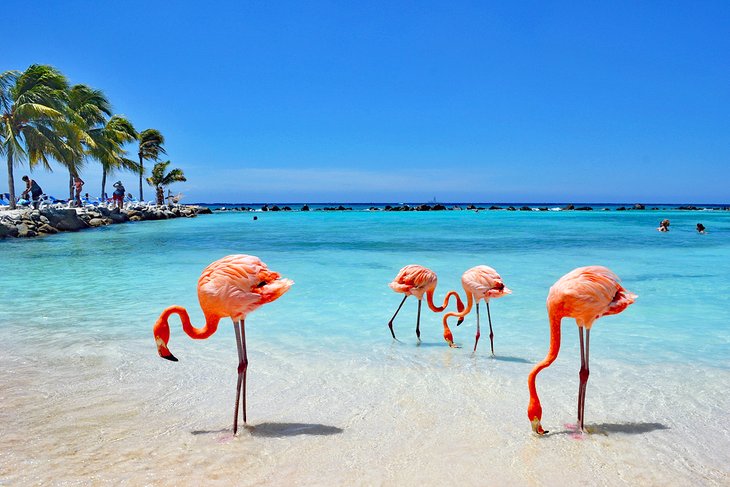
Ever seen the famous Instagram posts of bright pink flamingos on a sublime beach in Aruba? Renaissance Island is probably where they were taken. This picture-perfect private island hosts some beautiful beaches, as well as an array of water sports and photogenic wildlife.
If you feel like cooling off in the clear turquoise water, snorkeling, scuba diving, stand up paddleboarding, sailing, and kayaking are all available. And if relaxation is more your style, book a private cabana, order a meal from the restaurant, or succumb to pampering treatments at Spa Cove.
Wildlife, though, is one of the island's highlights. The bright pink flamingos tend to steal the show, but you can also spot iguanas, hermit crabs, and other birds and lizards.
Wondering how to visit Renaissance Island? Well, there's a catch. The only way to ensure a visit here is to stay at the Renaissance Wind Creek Aruba Resort. Failing that, you can always try to book a day pass, but these need to be organized in advance, and are difficult to obtain when the resort is full.
Children are only permitted on Flamingo Beach between 9 and 10am. But families can visit the island's other sandy shore, Iguana Beach, all day.
Alto Vista Chapel
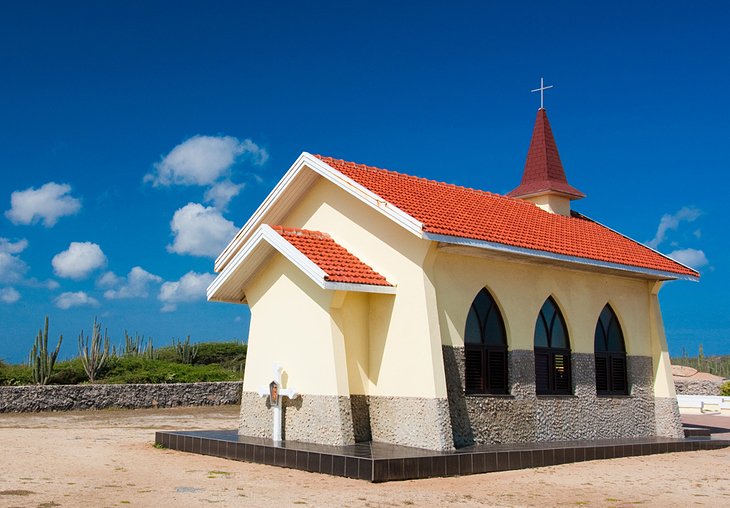
The small Alto Vista Chapel is one of Aruba's cherished landmarks. Often called the "Pilgrim's Church," Alto Vista was originally built in 1750 by the Spanish missionary, Domingo Antonio Silvestre. The current structure was built in 1954 on the same site, and it's one of the island's most famous landmarks.
Alto Vista means "highest view" in Spanish and, true to its name, the church sits high on a hill with beautiful views over the island's north shore. The Stations of the Cross mark the road leading to the chapel.
While you're here, walk behind the chapel to the Peace Labyrinth, where you can wander the circular path in quiet contemplation.
Address: Alto Vista, Noord
De Palm Island
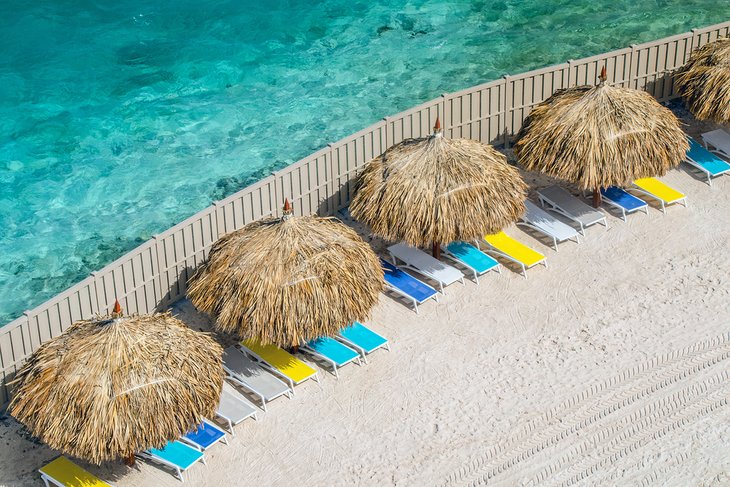
A five-minute ferry ride from the mainland, De Palm Island is a small private splotch of sand, packed with activities. For all-inclusive rates, guests can swim, snorkel, or zip around on banana boats. Land-based activities include beach volleyball, basketball, bingo, salsa lessons, and card games.
Families with young children will enjoy the colorful water park, with spiral waterslides and splash pools. For additional fees, guests can try the Sea Trek underwater helmet walk, SNUBA, or indulge in massages.
De Palm Island now has a flock of flamingos on the beach. Though they are not the vibrant coral-pink hue of the more popular Renaissance Island counterparts, they still make great subjects for Instagram posts.
Address: Port de Palm, Aruba
Official site: https://depalmisland.com/
